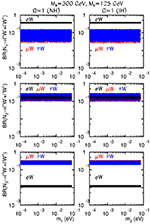

(In this analogy the additional gauge degree of freedom is the scale parameter identified with the sphere's radius within the embedding space.) You can possibly see the interplay of this in the Kaluza-Klein descriptions of the gauge symmetries, or more precisely in their comparison with the classic group representation counterparts. By way of analogy consider how much easier it is to describe say the curved manifold of a 2-sphere or 3-sphere by embedding them in a flat 3-space or 4-space respectively. Were we to fully complexify them we would be talking GL(1,C) and SL(2,C) et al.Ī way to think of these gauge degrees of freedom are as auxiliary variables we have added to fit the system description within a "flatter" mathematical description. Note that we non-the-less only consider the underlying description as Real (vs complex or weirder) because we only consider real parametrizations of the respective groups. It is the existence of complex phase in the description along with its non-obserability that gives us the U(1) gauge symmetry associated with electromagnetism. Note that we may conceive of a wholly real wave function with no complex phase, or a more complexly complex wave function (you can rediscover the weak interaction by extending from complex to quaternion amplitudes).

"Second quantization" is actually quantification, where we begin to consider particle number as a variable in the system. The norm of the wave function as a whole is associated with the unit probability, we presume, of finding that particle in some mode when we speak of the probability amplitudes for finding it in specific ones. I am out of my depth on the fine details and how the Lagrangian might look so defer to others on this point.Īs to your comments and questions about electric charge, you associated the norm of the wave function in first quantization with particle number but that is not correct. There are however difficulties with this view, the principle being it implies a much larger zoo of force carrying lepto-color bosons which are not observed nor implied by combinatoric calculations. If we can include leptons in the quark family then lepton number is the one quark color that is not confined but it would again be part of this Noether conservation from a (larger) symmetry. It is a classic.Ĭolor conservation is a result of the existing SU(3) gauge symmetry of the strong force, as a Noether conserved quantity. See Lepton Number as the Fourth Color by Pati and Salam Phys.Rev. There have been speculations in the early Grand Unification attempts to extend the color group to SU(4) incorporating leptons as the fourth quark. Baryon number was an observed conserved quantity before the quark model emerged so we still speak in those terms. With the quark model, since Baryons are composites Baryon number conservation when it holds will be a result of quark conservation and color confinement.


 0 kommentar(er)
0 kommentar(er)
